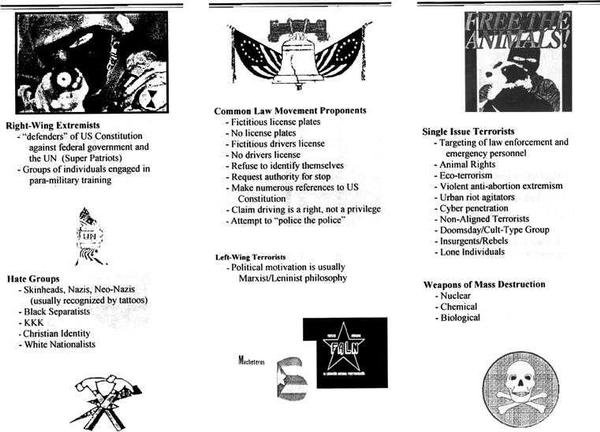
How food manufacturers trick consumers with deceptive ingredients lists
Tuesday, July 10, 2007 by: Mike AdamsThe myth: Ingredients lists on food products are designed to inform consumers about what's contained in the product. The reality: ingredients lists are used by food manufacturers to deceive consumers and trick them into thinking products are healthier (or better quality) than they really are. This article explores the most common deceptions used by food manufacturers to trick consumers with food ingredients lists. It also contains useful tips for helping consumers read such labels with the proper skepticism.
Deceiving consumers: Tricks of the food trade
If the Nutrition Facts section on food packaging list all the substances that go into a food product, how can they deceive consumers? Here are a few of the most common ways:One of the most common tricks is to distribute sugars among many ingredients so that sugars don't appear in the top three. For example, a manufacturer may use a combination of sucrose, high-fructose corn syrup, corn syrup solids, brown sugar, dextrose and other sugar ingredients to make sure none of them are present in large enough quantities to attain a top position on the ingredients list (remember, the ingredients are listed in order of their proportion in the food, with the most common ingredients listed first).
This fools consumers into thinking the food product isn't really made mostly of sugar while, in reality, the majority ingredients could all be different forms of sugar. It's a way to artificially shift sugar farther down the ingredients list and thereby misinform consumers about the sugar content of the whole product.
Another trick is to pad the list with miniscule amounts of great-sounding ingredients. You see this in personal care products and shampoo, too, where companies claim to offer "herbal" shampoos that have practically no detectable levels of real herbs in them. In foods, companies pad the ingredients lists with healthy-sounding berries, herbs or superfoods that are often only present in miniscule amounts. Having "spirulina" appear at the end of the ingredients list is practically meaningless. There's not enough spirulina in the food to have any real effect on your health. This trick is called "label padding" and it's commonly used by junk food manufacturers who want to jump on the health food bandwagon without actually producing healthy foods.
Hiding dangerous ingredients
A third trick involves hiding dangerous ingredients behind innocent-sounding names that fool consumers into thinking they're safe. The highly carcinogenic ingredient sodium nitrite, for example, sounds perfectly innocent, but it is well documented to cause brain tumors, pancreatic cancer, colon cancer and many other cancers (just search Google Scholar for sodium nitrite to see a long list of supporting research, or click here to read NewsTarget articles on sodium nitrite).Carmine sounds like an innocent food coloring, but it's actually made from the smashed bodies of red cochineal beetles. Of course, nobody would eat strawberry yogurt if the ingredients listed, "Insect-based red food coloring" on the label, so instead, they just call it "carmine."
Similarly, yeast extract sounds like a perfect safe food ingredient, too, but it's actually a trick used to hide monosodium glutamate (MSG, a chemical taste enhancer used to excite the flavors of overly-processed foods) without having to list MSG on the label. Lots of ingredients contain hidden MSG, and I've written extensively about them on this site. Virtually all hydrolyzed or autolyzed ingredients contain some amount of hidden MSG.
Don't be fooled by the name of the product
Did you know that the name of the food product has nothing to do with what's in it? Brand-name food companies make products like "Guacamole Dip" that contains no avocado! Instead, they're made with hydrogenated soybean oil and artificial green coloring chemicals. But gullible consumers keep on buying these products, thinking they're getting avocado dip when, in reality, they're buying green-colored, yummy-tasting dietary poison.Food names can include words that describe ingredients not found in the food at all. A "cheese" cracker, for example, doesn't have to contain any cheese. A "creamy" something doesn't have to contain cream. A "fruit" product need not contain even a single molecule of fruit. Don't be fooled by product names printed on the packaging. These names are designed to sell products, not to accurately describe the ingredients contained in the package.
Ingredients lists don't include contaminants
There is no requirement for food ingredients lists to include the names of chemical contaminants, heavy metals, bisphenol-A, PCBs, perchlorate or other toxic substances found in the food. As a result, ingredients lists don't really list what's actually in the food, they only list what the manufacturer wants you to believe is in the food.This is by design, of course. Requirements for listing food ingredients were created by a joint effort between the government and private industry (food corporations). In the beginning, food corporations didn't want to be required to list any ingredients at all. They claimed the ingredients were "proprietary knowledge" and that listing them would destroy their business by disclosing their secret manufacturing recipes. It's all nonsense, of course, since food companies primarily want to keep consumers ignorant of what's really in their products. That's why there is still no requirement to list various chemical contaminants, pesticides, heavy metals and other substances that have a direct and substantial impact on the health of consumers.
This article is continued at http://www.newstarget.com/021929.html




Nuk ka komente:
Posto një koment